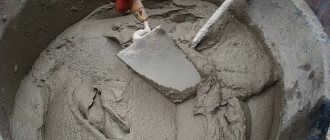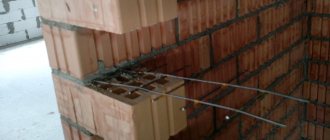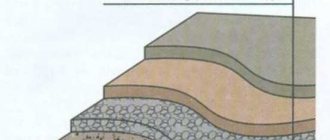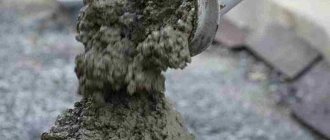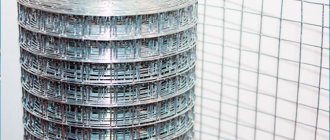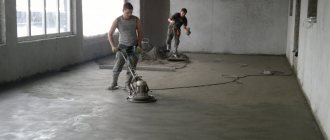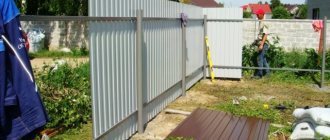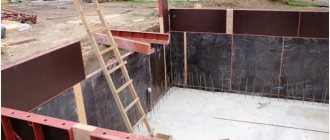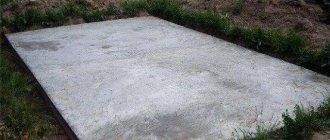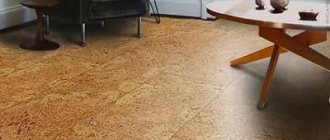Which mortar for laying a stove is better? Varieties, composition, proportions and preparation of solution. Use of various additives.
The quality of the furnace’s masonry, its tightness, heat resistance, and strength over the years depend on a properly mixed solution. A shortage or excess of any component leads to its cracking, loss of integrity, and carbon monoxide leakage. Ceramic bricks are used for the work, and it is the clay mortar for laying the stove that is homogeneous in composition. It provides a unified structure of the structure with the same physical properties of mortar and brick. That is why clay solution is considered the best.
Classification of solutions
Basically, masonry mortars are divided according to the type of binder. To do this, either lime or cement is added to the mixture. But in this case there are four types of solutions:
- Lime.
- Cement.
- Lime-cement.
- Clay.
Let’s give several characteristics to each type, indicating their pros and cons accordingly:
- Cement mortar is the most commonly used in brickwork. It has increased strength and low moisture permeability. Today it is used in the construction of buildings and structures of various heights and complexity. It is cement mortar that is used in the construction of brick or block foundations.
- Lime. It has high plasticity and good thermal insulation properties. It has low shrinkage and low specific gravity. It is very convenient to work with such a solution. But it is recommended to use it in low-rise construction, because the mixture will not withstand heavy loads.
Lime mortar for masonry Source kamtehnopark.ru
- Cement-lime. This solution has all the characteristics of the two previous varieties. There are no restrictions on use in construction.
- Clay. It is rarely used in construction today, although it has a number of worthy advantages. For example, high plasticity and frost resistance. The only thing that discourages builders from using it is the complexity of the batch associated with the preparatory work. To do this, the clay must be sifted and cleared of debris, plus crushed to the required state.
We will discuss below how to prepare mortar for bricklaying with different binders. Now let's continue to look at the classification.
The next point of division is the complexity of preparation. There are two types:
- Simple. Essentially, it is a mixture of one binder and sand. That is, it can be a cement-sand or lime-sand mixture.
- Complex ones, where two binding components are involved at once. That is, it is a cement-lime mortar.
Another position is on functional and technological properties. There are three types:
- fatty solutions;
- normal;
- skinny.
Preparation of masonry mortar Source promtech33.ru
They differ from each other only in the amount of binder added. The more of the latter, the “fatter” the solution. It is this material that has increased strength, but at the same time it has the highest shrinkage, which leads to cracking of the applied mass after hardening. It is clear that the skinny version has low strength and ductility. It belongs to budget options. It is better not to use both the first and second in private housing construction. Therefore, it is recommended to mix normal solutions.
And the last position of the classification is by specific gravity. There are two types:
- heavy – weighing more than 1500 kg/m³;
- light – up to 1500 kg/m³.
Clay mortar for bricklaying Source 2proraba.com
Lime based
For the construction of the foundation and stove chimney, it is recommended to use a composition based on lime and cement.
A special dough made by mixing quicklime and water in a 3:1 ratio. Sifted sand is added to the finished dough through a fine-mesh sieve in a ratio of 3:1 - 3 volumes of sand to 1 volume of dough. The finished mass is diluted with water until a thick mass is obtained.
The mixture for laying a lime-based stove is quite plastic and durable.
The fat content of the lime composition is determined by the amount of sand. For an excessively fatty mixture, 5 volumes of the sand component are required, for a normal mixture - no more than 3 volumes.
Strength and water resistance can be increased by adding cement. To prepare such a composition, it is necessary to use the components in the following proportions (parts):
- Cement – 1;
- Sand – 10;
- Lime dough – 2.
Preparation of the solution has the following sequence of actions: cement and sand components are combined in a separate container. The finished lime-based dough is diluted with purified water until a thick consistency is obtained. Add bulk ingredients to the diluted dough and mix. To increase viscosity, the composition is diluted with water.
How to prepare solutions
So, having dealt with the classification, let’s move on to the question of how to prepare mortar for brickwork. Let's start with an important point - the proportions of ingredients.
Proportions of masonry mortar
Builders recommend that before mixing the mortar, pay attention to three important components: the type of soil on the construction site, the type of object being built, and the number of floors of the building. Taking this as a basis, we can talk about proportions:
- Cement mixture. Classic recipe: cement-sand – 1:3. This ratio can be changed up to 1:6, taking into account the conditions of use of the material. That is, what loads it will be subjected to. The less load, the greater the ratio. Next, the moisture content of the sand and the brand of cement itself are taken into account. The higher the brand, the greater the ratio of the two components.
- Lime. Here the proportions are from 1:2 to 1:5.
- Cement-lime. Here the cement-lime-sand ratio is from 1:1:6 to 1:3:15.
- Clay. Proportions of clay and sand: 1:1 or 1:2.
The question of how to prepare a mortar for bricklaying in proportions is closed, let's move on to the next section.
Proportions of masonry mortars in the table:
Source center-esm.ru
See also: Catalog of brick house projects
Brands of masonry mortars
Before moving on to labeling, I would like to dwell on an important point. This is a waste of material. For private developers it is very important, because the budget for building a house depends on it.
So, 0.25 m³ of mortar mixture is required for 1 m² of brickwork. Let us add for information that if the house is built from blocks, then the consumption will be only 0.05 m³. We also note that if hollow bricks are used to build walls, then the consumption will increase significantly due to the material getting inside the blocks. Therefore, builders recommend mixing a thicker solution. Somewhere of medium thickness. This mixture does not spread over the surface of the masonry.
Now let's move on to the markings:
- grades 0 and 2 are practically not used;
- but 4, 10, 25, 50 and 75 are the most common;
- There are so-called specialized masonry mortars with grades 100, 150 and 200, which are not used in private construction.
Brands of ready-made cement mortar in the table:
Source atlant-shop.com.ua
The marking includes not only numerical designations, but also letters. Usually the letter "M" is added to the number. For example, M10. This suggests that the masonry mortar can withstand a load of 10 kg/cm². In fact, it is a physical quantity called strength.
And another important characteristic is the mobility of the masonry mass. That is, to what extent the solution spreads over the brickwork and fills the pores. This parameter is determined by lowering a metal cone weighing 0.3 kg into the solution. Then the depth of immersion in centimeters is measured. This will be the plasticity of the solution.
This parameter, for example, for red brick should be 13 cm, for hollow brick 8 cm. It is recommended to increase the plasticity in summer, for which liquid plasticizers are usually used.
How to determine the mobility of masonry mortar Source ds04.infourok.ru
Features of masonry mortars
What mortar is needed for laying bricks:
- with high strength, because brick walls are always affected by external factors;
- with reliable adhesion, meaning high bonding with bricks;
- with sufficient manufacturability that allows you to apply the mixture in a thin layer;
- with good insulating qualities, for example, thermal insulation properties, sound insulation and moisture resistance.
See also: Catalog of companies that specialize in installation of ventilation, air conditioning and autonomous gasification equipment
Kneading technology
Having dealt with all the positions that answer the question of which mortar for laying bricks is best to choose, let’s move on directly to the main thing. And the first thing you need to pay attention to is kneading the mixture. This is done simply:
- The components of the bulk mass are prepared. Namely: cement, sand, water, plasticizers. If lime is required, then it is slaked.
- All main bulk components are mixed in the required proportions. That is, a dry mixture is formed. Then water and plasticizers are added to it in portions with stirring.
- Knead until the mixture becomes homogeneous.
Attention! The “life” of masonry mortar is short. After 1.5-2.0 hours it can no longer be used, because it simply begins to harden and, accordingly, lose its technical characteristics.
Water is added to the finished dry mixture Source sense-life.com
Technology for preparing solutions
With a simple masonry mortar everything is clear. We mixed cement and sand, then added water to the composition - and everything was ready.
With complex solutions everything is more complicated. Firstly, slaked lime is used for this. Essentially, this quicklime is filled with water and kept in this state for several hours. A so-called lime paste is formed. To prepare it, one portion of water is poured into three portions of the material.
It should be noted that the amount of lime added to the solution will depend on the brand of cement added. Therefore, we suggest you figure out how to make a mortar for bricklaying - the proportions of sand and cement with the addition of lime:
- If you need to make a mortar of M10 grade, then add it in different proportions: cement M150 - 1 part, lime - 1.2 parts, sand 9.5.
- Solution grade M25. It can be made by adding different grades of cement. For example, the ratio of the components cement-lime-sand, where M300 cement is used, will be: 1: 1.4: 10.5. If M200 grade cement is added, the ratio changes to 1:0.8:7. That is, the higher the grade of cement, the higher the proportions of other components.
- Brand of masonry mixture M50. There are more variations of recipes and preparations here. Let’s just list the ratios: with M400 cement – 1:0.9:8, with M300 – 1:0.6:6, with M200 – 1:0.3:4.
- Same for M75. With cement M500 – 1:0.8:7, with M400 – 1:0.5:5.5, with M300 – 1:0.3:4, with M200 – 1:0.1:2.5.
For load-bearing walls, M50 grade mortar is used Source 2.bp.blogspot.com
Cleaning from impurities
For the stove solution you need clean sand. To separate it from impurities, it must first be sifted and then washed. For sifting, a fine mesh sieve with a mesh size of 1.5 mm is used. Next, the sand is washed as follows: a sack with sagging is pulled onto the holder (you should get a kind of net), into which the sand mixture is placed. The structure is fixed on a stand, sand is poured in and it is washed using a hose and a stream of water. The process continues until the water flowing from the sand becomes clean.
The clay is mixed with water and left to soak.
To remove foreign impurities from the clay, it is washed. Grind, place in the upper part of an oblong container (for example, an old trough or bathtub). The container is installed at an angle of 4–8°. Water is poured into the lower part so that it is at the top and does not touch the clay. Use a small spatula or iron scoop to wash the clay. Gradually it softens and a homogeneous paste-like substance forms at the bottom, which is carefully transferred to another container. The process is continued until the required amount of solution is obtained.
Sand is sifted through a fine mesh sieve
If you purchased packaged dry clay, you need to soak it. The process of saturating clay with water is quite simple. To work, take a wide and deep container, fill it with dry clay to a level of 10–20 cm, level it and add water. The amount of water is so that everything is completely covered. After a day, mix thoroughly with a shovel, add liquid if necessary and leave again for the same period. When everything turns into a paste, the clay is ready. This is repeated several times until all the required amount is soaked.
Calculation of masonry mortar
It was already mentioned above how much masonry mortar is needed for brickwork. More often they oppose the ratio taking into account per 1 m³ of wall being built. Typically, 20-30% of the finished mixture is used for this parameter.
In fact, today there is no need to count anything. There are tables freely available on the Internet where all the relationships are defined. For example, if you need to mix a solution of M50 brand, then for this you will need:
- cement grade M400 - 175 kg, based on the yield of 1 m³ of finished masonry mixture;
- M300 – 225 kg;
- M200 – 325 kg.
Consumption of solution depending on the type of work performed Source minkor.ru
Ready mixes
In order to simplify the technology for preparing mortars, today in the hardware store there is a range of offers of mixtures, when diluted with water, a ready-made masonry mortar .
This is a popular product among consumers, since preparation requires adding only a certain amount of clean water - detailed instructions on the package.
Based on the required mixing volumes, use either a hand mixer or a concrete mixer. The process takes 5-8 minutes.
Ingredient Requirements
The question of how to properly prepare a mortar for bricklaying requires not only the precise addition of components, but also the correct selection of materials according to their characteristics. This is mainly about cleanliness.
The sand should have minimal organic and mud inclusions. The cleaner the better, the higher the technical characteristics of the solution. The same goes for water. But here, special attention is usually paid to the hardness of the latter, and its composition in terms of the quantitative content of salts. Therefore, for laying bricks they try to use tap water, possibly from wells and wells.
Features of materials preparation
To make the masonry durable you need to use:
- Only clean, cold (temperature should be 15-20 degrees) water (preferably distilled). There should not be any oily impurities in it.
- The cement you bought before starting construction work. If you save money and use old cement, there is a high risk that the solution will not be able to gain the necessary strength.
- River (or even better, quartz) sand. At the same time, it should not contain any foreign inclusions. High-quality sand is easily recognized by its gray color. But beautiful yellowish sand, on the contrary, is better not to use. This shade is given to it by clay, the inclusions of which are completely unnecessary in the mixture (such sand is also called mountain or gully sand). Sand is also used for brickwork, the fraction of which is at least 2 mm.
Healthy! Sea sand is never used for preparing building mixtures, as it contains too much salt.
You will also need containers and other products for preparing the solution:
- Mortar mixer or large container. Mixing can be done manually, but it is better to use automatic mixers.
- Several buckets of 10-12 liters. If you have large-scale work ahead, then they are very convenient for measuring the components of the solution. For a small project, you can use a regular shovel for this.
Determination of mobility
Since the mobility of the composition is one of the key characteristics, it must be measured with high accuracy. To check the solution for optimal mobility, you need to use a cone with an angle of 30°, a height of 15 cm and a mass of 300 g. The cone is placed in the solution, and the mark where it hardens will indicate the degree of movement.
There are different principles to follow when choosing optimal mobility:
- For solid bricks, a mortar with a mobility of 9-13 cm is used.
- Hollow brick should have a value of 7-8 cm.
- When carrying out repair and construction work during the hot period, you will need to use a mixture with indicators of 12-14 cm.
